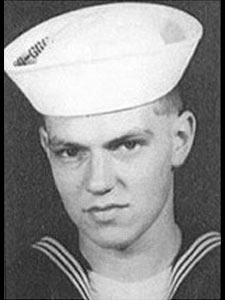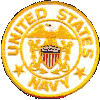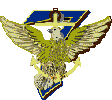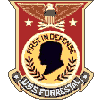|
James Lawrence Blaskis
Seaman
USS FORRESTAL, TF 77, 7TH FLEET United States Navy Euclid, Ohio August 07, 1945 to July 29, 1967 JAMES L BLASKIS is on the Wall at Panel 24E, Line 15 |
 |

|



| |
|
By Bob Shelton The story begins in February, 1967 aboard the USS Forrestal. The Forrestal was the US Navy's first super carrier and had recently acquired a complete overhaul at the Norfolk Naval Shipyard in Portsmouth, Virginia. There was probably not another ship on the planet earth that was as modern and up to date as she was. We had a new propulsion system, new radar, the latest in satellite navigation, nuclear armament, and a total facelift. After spending several weeks training the crew and testing the ship on a shakedown cruise, we sailed for Southeast Asia. We were scheduled to be gone for most of the year and hoped to be back stateside before next Christmas. Essentially, the only two "outside" spaces aboard a carrier are the flight deck and the bridge. The flight deck is limited to pilots and support personnel and the bridge is off limits to all but those who work there. Those locations were sometimes very fast paced. Naval careers were won and occasionally lost in both places. Due to the design of the ship, most of the crew of 5400 was confined to work, eat, and sleep below decks. I was assigned to the Navigation Division and practically lived on the bridge. Up there, I was one of the fortunate few who got to see sunshine on a daily basis. At sea, day runs into night and eventually nearly everyone aboard begins to lose track of time. I would be no exception but my job dictated that I maintain accurate records. The bulk of my duties involved working with electronic equipment, delicate instruments, charts, naval publications, and the maintaining of a ships log that is known as the Quartermaster's Notebook. One night in late July, I was awakened by a horrible nightmare. It was very unusual for me to recall any dream and I didn't remember having had a nightmare in many years. This particular dream was very disturbing and I lay awake for some time in my bunk, trying to shake the ill effect. Eventually, I arose and prepared for work. After arriving on the bridge and consuming my usual daily dosage of morning coffee, I was confronted by a shipmate named J.B. Talley. Apparently he perceived that something was bothering me and asked me if I was feeling okay. I attempted to explain the dream but felt very inadequate in illustrating what I had visualized during the night. Words could not describe the lingering emotional and physical effects. As the day progressed, I concentrated on other things. The following night, I was awakened again by the same experience. In my dream I saw bright flashes of light with total chaos that was blended into a churning background. The scene was accompanied by indescribable fear. A glimpse of hell is the best description that I could muster. The reoccurring dream was so disturbing that I was unable to go back to sleep. The date was July 29, 1967 and though it was early in the morning, I got up, dressed, and prepared for work. I was still unable to shake the chilling effect that remained. As I sat outside the charthouse on the wing of the bridge, I again spoke with Talley. While we talked, other people in the same division came by and joined in the discussion. I was there for some time, trying to make sense of the nightmares. Suddenly, I realized that it was nearly time for work. James Blaskis, a buddy from Akron, Ohio, approached me and told me that he had checked the watch assignment and noticed that I was scheduled to work in the port side after-steering section. That location is several decks below the hangar bay in the stern of the ship. It is an engineering space that is designed for emergency control of the ship should something happen to the bridge. Blaskis stated that he had been assigned the bridge watch for that day. We both knew that James preferred to work in after-steering because the environment was much slower paced than that of the bridge. The appropriate dress for below desks was dungarees while the required uniform for the bridge was navy whites. Blaskis commented to me that I was already in whites and asked if I would be willing to trade watches with him. I noticed that he was in dungarees and I agreed with the trade. As James left, I saw that he had a paperback book in his back pocket. I knew immediately what his plans for the morning were. At 07:45 hours, I relieved the Quartermaster of the watch on the bridge. The next three hours were pretty routine while the ship prepared for an air assault over North Vietnam. As some of the planes were being brought up from the hangar deck and made-ready for launch, a fire ignited under an A-4 aircraft. Someone on the bridge stated that a plane was on fire on the flight deck. I looked out of the window of the bridge and confirmed the observation. Knowing that a fire aboard the ship was reasonably commonplace, I made the entry into the ship's log. The time was 10:52 hours. The ship's fire alarm was sounded and fire fighters raced to the scene. Within a minute or so, an explosion was heard. Now a massive amount of jet fuel covered the flight deck and several aircraft were engulfed in flames. General Quarters (battle stations) was sounded and the appropriate entries were quickly made in the log. Captain John K. Beling appeared on the bridge and announced that he had the con (officer in command). He had apparently been relaxing in his at-sea quarters and was not in full uniform. Additional explosions rocked the ship and Captain Beling sat unwavering in his chair overlooking the melee. He barked commands as though he had trained for this very event. As the first responding fire fighters rushed the burning aircraft, explosions cleared the deck of all visible personnel. A second wave of personnel followed the first and were again wiped from view in the following blasts. Continually responding sailors were driven back by even more explosions, growing flames, and enormous heat. The person who had been assigned that battle station relieved me as Quartermaster of the watch. My battle station was in secondary con (a duplicate bridge in the bow of the ship below the flight deck). With all entrances sealed and fires raging aboard, I would never be able to get there. I knew that the station was now being manned by others in my division. I felt helpless as I watched the inferno consume the ship. I had an overwhelming urge to try to get to James Blaskis. The next thing that I remember is my being in a smoke filled passageway below the flight deck. Most of the personnel were abandoning the area and were moving in the opposite direction. I was familiar with the layout of the ship and knew several alternate routes to the port steering section. After making several attempts, I found all of them impassable. Strong fumes caused my throat and lungs to burn badly. I knew that I had to find some fresh air before I was overcome. I recall being in several other places, assisting where I could. Ordnance and multi-million dollar aircraft were pushed over the side of the ship. A disemboweled sailor sat in a first aid station, holding his intestines in his hand. Additional ships were alongside, assisting in the fire fighting. Aided by helicopters from another carrier, many of the injured were transported to other ships. People from all divisions and departments worked together with a common goal. After returning to the bridge, I discovered that several of my shipmates thought that I was in the after-steering compartment. According to that day's watch assignment, I was below decks. I went into the charthouse and called Blaskis via voice-activated phone. Communication was very weak and noisy. James Blaskis was still alive and was in the compartment with two other people. The first sailor was apparently killed immediately and the other had sustained serious injuries. James attempted to stop the bleeding of the injured person and move him into a more secure area. The only exit was straight up a shaft alley and into the inferno. Blaskis had internal injuries and was bleeding from the nose and mouth. Later, we lost contact with that station. The next few days seemed to be a blur. Charred bodies were removed from below deck, some permanently frozen into sitting and running positions. The smell of death permeated the entire ship. The scene was so surreal; the reality of it all still hadn't soaked in. As I later sat and reflected on the recent events, I recalled the previous dreams. I now understood what they meant. I had somehow seen the details of the carnage before it occurred. The nightmares seemed to be a prior instant replay of the events. I had no explanation for why I dressed in a white uniform instead of the standard dungarees on the morning of the fire. It became too much for me to comprehend. Several days later we arrived in Subic Bay, Philippines. Fires continued to burn within the bowels of the ship and we were greeted with firefighting equipment on the pier. By mid-August we were underway again, en route to the United States. I knew that the carrier would return to Norfolk Naval Shipyard and would probably remain there for many months. I was told that I had little chance of being transferred to another station. As a last resort, I volunteered for the most hazardous duty that I could find. Within days, I was accepted into the amphibious assault training command in Little Creek, Virginia. Upon completing counter-insurgency and survival training, I received orders to Vietnam. Two years later I returned home. Many things had happened while I was away. I was certainly a different person. Some of my old school mates were now protesting the war in Southeast Asia. I felt like an outsider in my own hometown. People dressed odd, men had long hair, and our society seemed to have gone insane. Like many others, I made the gradual transition back into civilian life. Of the events that had occurred to me throughout the years, the Forrestal disaster is one of the most difficult to forget. Even today, I seldom sleep on the nights of July 29. "Yet, there but for the grace of God go I."
Copyright 2000, Bob Shelton |
| Contact Us | © Copyright 1997-2019 www.VirtualWall.org, Ltd ®(TM) | Last update 08/15/2019. |
